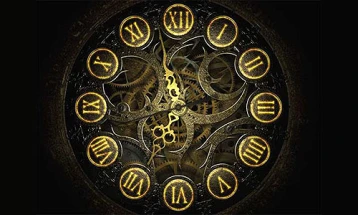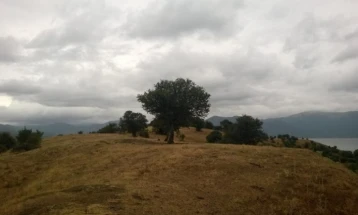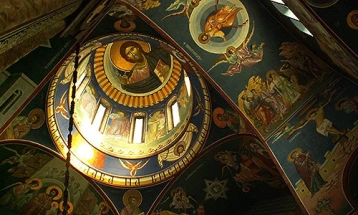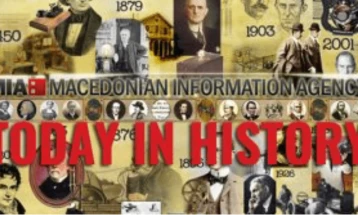
1 September 2022 (MIA)
Macedonian Orthodox Church Calendar
The Holy Martyr Andrew, Stratelates
Andrew was an officer, a tribune, in the Roman army during the reign of Emperor Maximian. He was a Syrian by birth and served in Syria. When the Persians menaced the Roman Empire with there military, Andrew was entrusted with the army to battle against the enemy. During this occasion, Andrew was promoted as a commander – Stratelates. Secretly a Christian, even though he was not baptised, Andrew trusted in the living God and, of the many soldiers, he chose only the best and entered into battle. He said to his soldiers before the battle that if they would call upon the help of the one, true God, Christ the Lord, their enemies will scatter as dust before them. Truly, all the soldiers filled with enthusiasm at Andrew and his faith invoked Christ for assistance and made an assault. The Persian army was utterly destroyed. When the victorious Andrew returned to Antioch some, who were envious, accused Andrew of being a Christian and the imperial deputy summoned him to court. Andrew openly confessed his unwavering faith in Christ. After bitter tortures, the deputy threw Andrew into prison and wrote to the emperor in Rome. Knowing Andrew’s respect among the people and in the army, the emperor ordered the deputy to free Andrew to freedom and to seek another opportunity and another reason (not his faith) and then to kill him. Through God’s revelation, Andrew learned of the emperor’s command and, taking with him his faithful soldiers, 2593 in number, departed with them to Tarsus in Cilicia and there, all were baptised by Bishop Peter. Persecuted even there by the imperial authorities, Andrew with his detachment withdrew farther into the Armenian Mountain Tavros. Here, in a ravine while they were at prayer, the Roman army caught up with them and all to the last one were beheaded. Not one of them even wanted to defend themselves but all were desirous of a martyr’s death for Christ. On this spot, where a stream of the martyr’s blood flowed, a spring of healing water erupted which cured many from every disease. Bishop Peter came secretly with his people and, on the same spot honourably buried the bodies of the martyrs. Dying honourably, they were all crowned with the wreath of glory and took up habitation in the Kingdom of Christ our Lord.
Catholic Calendar
St. Giles – Also known as Aegidus; Egidio
Born a wealthy noble. When his parents died, he used his fortune to help the poor. Miracle worker. To avoid followers and adulation, he left Greece c.683 for France where he lived as a hermit in a cave in the diocese of Nimes, a cave whose mouth was guarded by a thick thorn bush, and a lifestyle so impoverished that, legend says, God sent a hind to him to nourish him with her milk. In Spain, shepherds consider Giles the protector of rams. It was formerly the custom to wash the rams and color their wool a bright shade on Giles’ feast day, tie lighted candles to their horns, and bring the animals down the mountain paths to the chapels and churches to have them blessed. Among the Basques, the shepherds come down from the Pyrenees on September 1, attired in full costume, sheepskin coats, staves, and crooks, to attend Mass with their best rams, an event that marks the beginning of autumn festivals, marked by processions and dancing in the fields. Born at Athens, Greece and died c. 710-724 in France.







